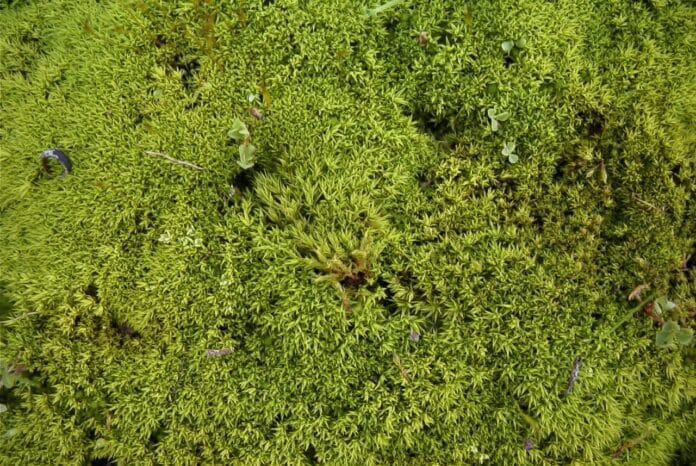Plant life is critical in fighting climate change by absorbing and converting greenhouse gases such as carbon dioxide. A tree, for example, may collect more than a ton of carbon from the air and store it in its wood and roots over its lifetime.
According to a new study published in Nature Geoscience, moss, the microscopic plants we commonly find on the ground or rocks, could be a key antidote to climate change.
The study, led by David Eldridge of the University of New South Wales in Australia and Manuel Delgado-Baquerizo of the Instituto de Recursos Naturales y Agrobiologa de Sevilla in Spain, discovered evidence that mosses have the potential to store a massive amount of carbon in the soil beneath them.
Co-authors include University of Michigan forest ecologist Peter Reich, director of the Institute for Global Change Biology at the School for Environment and Sustainability.
Mosses capture around 6.43 billion metric tons more carbon in the soil than barren stretches of soil without any plants commonly found nearby in worldwide semi-arid areas.
To put it into perspective, this is six times the annual global carbon emissions caused by changes in land use (e.g., deforestation, urbanization, mining, etc.) worldwide.
Mosses have both roots and leaves. However, their roots are not the same as those of vascular plants. Mosses, rather than traditional roots, contain specialized structures called rhizoids that act as root-like extensions, anchoring them to the soil’s surface.
To arrive at these conclusions, the research team of several dozen scientists from 16 nations investigated soil samples from various ecosystems spanning every continent. They studied 23 variables linked with biodiversity maintenance, numerous ecosystem services, and carbon storage.
They then calculated the contributions of moss and vascular plants such as trees to the 24 soil biodiversity and functional attributes across all sites.
The study discovered that moss-covered soil had higher levels of critical nutrients, faster rates of organic matter decomposition, and fewer cases of soil-borne plant diseases on average than plain, mossless soil.
Reich proposed an explanation comparable to that of trees in forests when analyzing the mechanisms that allow moss to deliver its collection of advantages to soil biodiversity.
He said, “Like forests, mosses stabilize the microclimates and physical environments beneath them; additionally, they provide minerals and carbon to the soil and thus offer a better home for the soil microbiome than areas of bare ground.”
Moss’s common prevalence is one of its most amazing characteristics. Mosses span an area larger than 3.6 million square miles (9.4 million square kilometres), which is comparable to Canada or China in size.
This further underscores why moss can significantly impact soil biodiversity and services like carbon sequestration.
Even more impressive is that mosses can thrive in challenging environments where other plants struggle to survive. For example, they contribute to soil biodiversity in sandy or salty soils and areas with highly variable rainfall.
The study highlights the importance of a comprehensive approach when considering nature’s role in addressing climate change.
Reich said, “These findings support the idea that we can use nature in various ways to fight climate change. Mosses matter because they show that even tiny plants in harsh environments can acquire and store carbon, just like large trees do elsewhere. And tiny plants and larger trees do this across the globe.”
Reich proposed that future research should focus on understanding the significance of all forms of plants in carbon capture, not just mosses and trees.
Like trees in forests, Mosses maintain the microclimates and physical conditions beneath them while also providing minerals and carbon to the soil.
Mosses can grow in harsh settings where other plants struggle, such as sandy or saline soils and locations with erratic rainfall. Future studies should concentrate on understanding the significance of all forms of plants in carbon capture, not simply mosses and trees. This will allow policies to optimize nature management, allowing plants to play the most protective role against climate change.
Reich said, “As a community of scientists, we need to understand all of Earth’s vegetation better—on land in places wet and dry, and warm and cold, but also in water (i.e., coasts and open oceans) and their role in scrubbing carbon out of the air, By comprehending their respective contributions, we can shape policies to optimize the management of nature, enabling vegetation to play a maximally protective role against climate change.”
The study was funded by the British ecological society.
Journal Reference:
- Eldridge, D.J., Guirado, E., Reich, P.B. et al. The global contribution of soil mosses to ecosystem services. Nature Geoscience. DOI: 10.1038/s41561-023-01170-x
